Discovering the botanical treasures of the mountains
Edelweiss is an integral part of the imagination we have about mountain flora. However, from the banks of rivers to high-altitude plains, from areas of scree to the edges of glaciers, nature is full of wonders, each one as pretty and colorful as the last! To get to know a little better some of the alpine plants that you can encounter while hiking in Val Thorens, follow the leader !
The Martagon Lily:
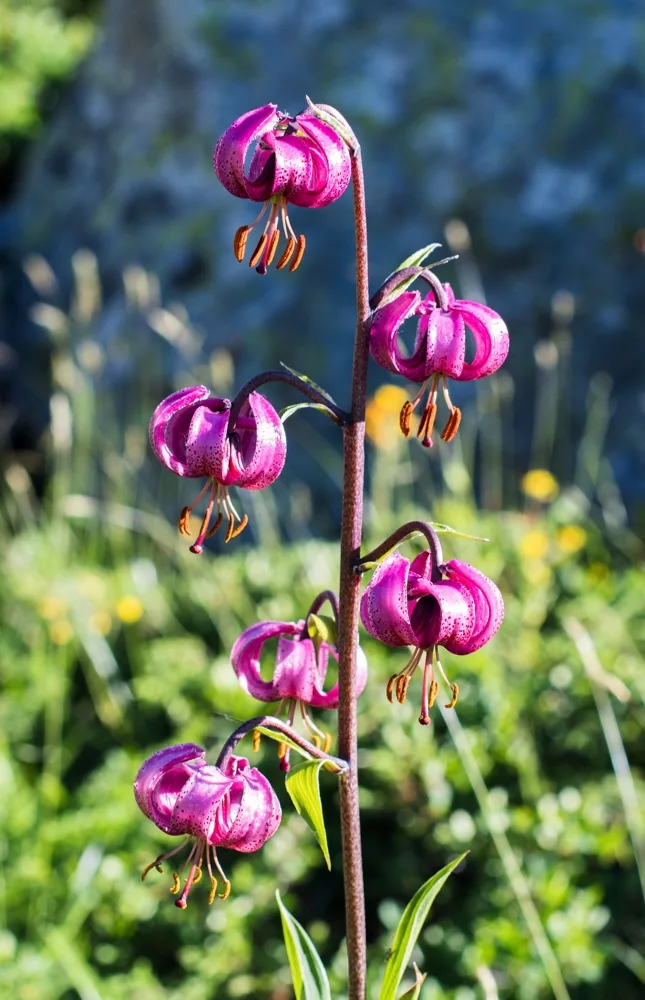
One of the most majestic alpine plants, it is found mainly in mountain meadows and undergrowth. Its long stem, which can measure up to 1 meter in height, supports between 3 and 8 clusters of candy pink flowers spotted with purple. In the center, its stamens (which are the parts of the male reproductive system that produce pollen), fall with the pistil (the female reproductive system of a plant) downward. It is not uncommon to see a small bee collecting precious pollen!
The Gentian of Clusius:
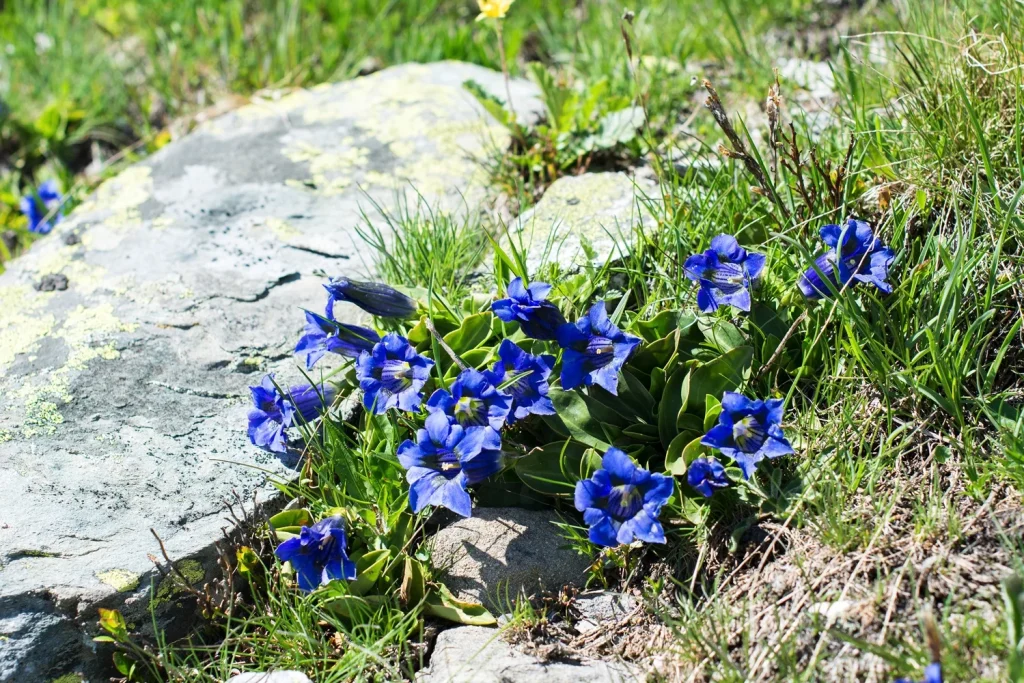
An emblematic flower of the Alps, the gentian is often represented in paintings, or painted on typically Alpine decorative furniture. Its trumpet-shaped night blue flowers open when the sun comes out: otherwise they remain closed until the next lull!
Stemless Campion:
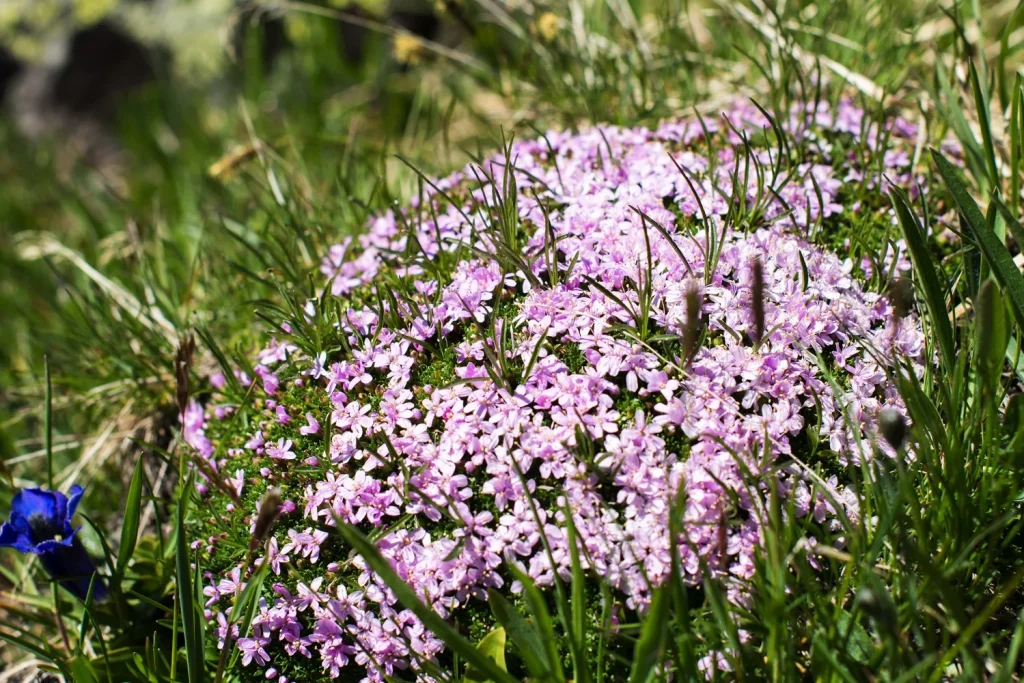
From June to September, small pale pink to raspberry pink cushions fill the spaces between the rocks. Quite resistant, we can observe campion flies reaching altitudes above 3000m! It is sometimes given the nickname “Cushion of the Alps”, or “Flowering Moss” because of its plant-cushion-shaped location.
The cobweb houseleek:
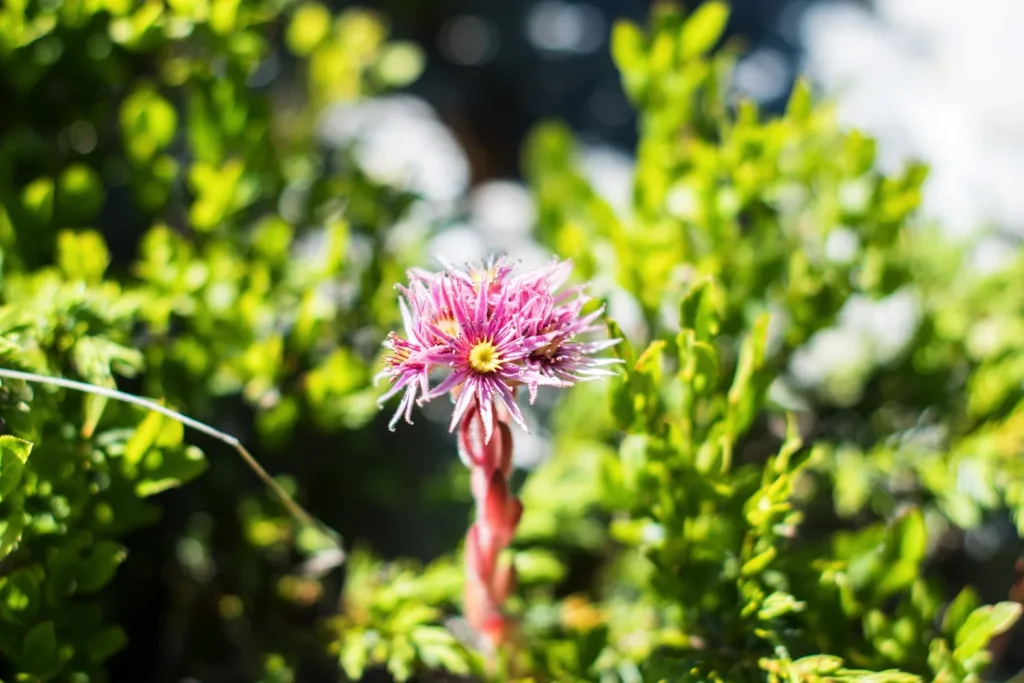
Don't panic for arachnophobes, there is no question of insects here! Houseleek is said to have a spider's web because its leaves, grouped in the shape of a rosette, are linked together by fine white threads, reminiscent of a spider's web. The Houseleek uses this stratagem to protect itself from extreme cold. Indeed, this succulent (fleshy plant adapted to life in arid environments) can survive temperatures down to -30°C! Thanks to its ability to store water, it is also perfectly adapted to the demanding mountain climate, and is perfectly at home in rock cracks as well as in certain meadows.
Scheuchzer’s Bellflower:
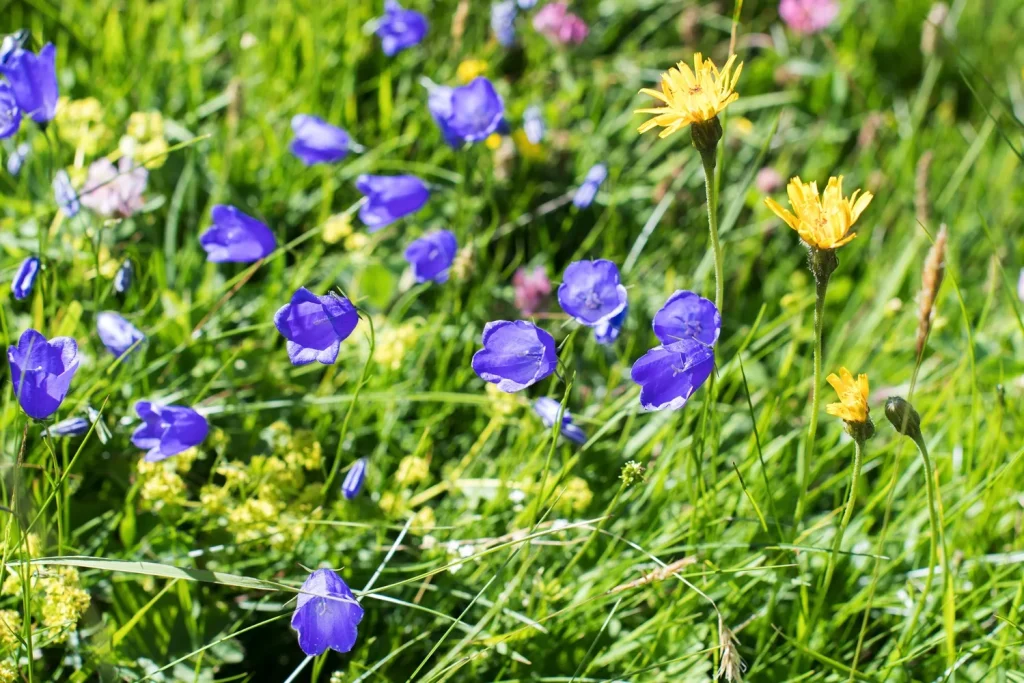
This pretty purple bell is the Scheuchzer Bellflower! Perhaps you know its cousin, the bellflower muralis which sometimes adorns the walls and flowerbeds of our homes?
Spectacle grass (or Lunetière):
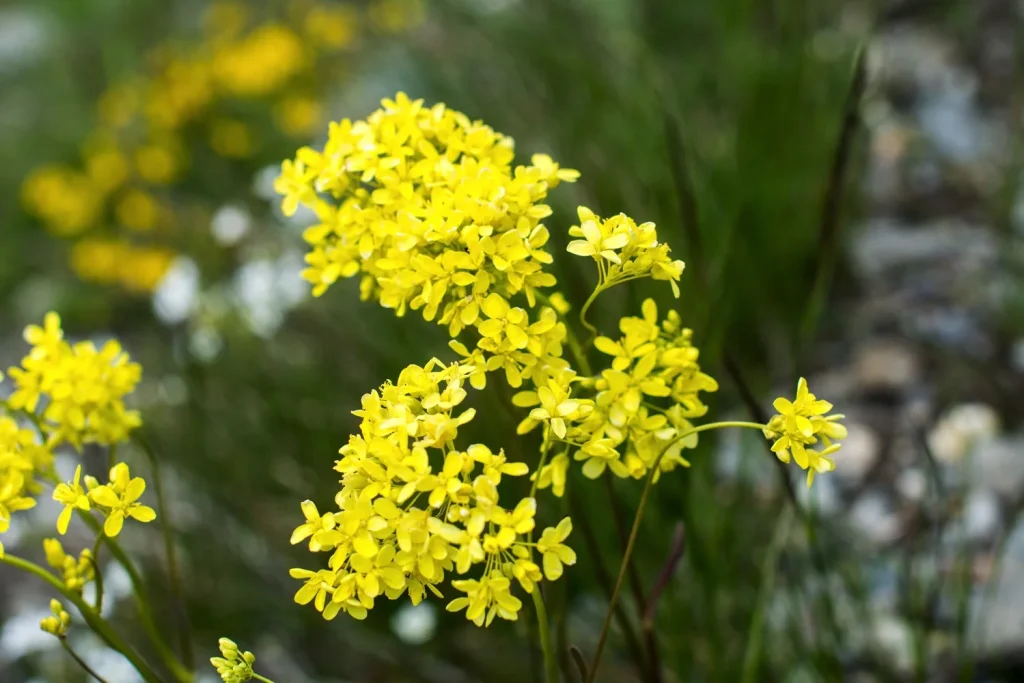
So where does the curious name of spectacle weed come from? It is the shape of its fruits, resembling besicles (old glasses without branches which attach to the nose), which gave this plant its funny name. From the end of summer, the pretty bright yellow flowers transform into a fruit made up of two small round shields stuck to each other, thus giving the shape of glasses! It is a fairly honey-producing plant, so even if it is not protected, it is better to leave it to the bees who will come to collect it.
Thought of the Alps:
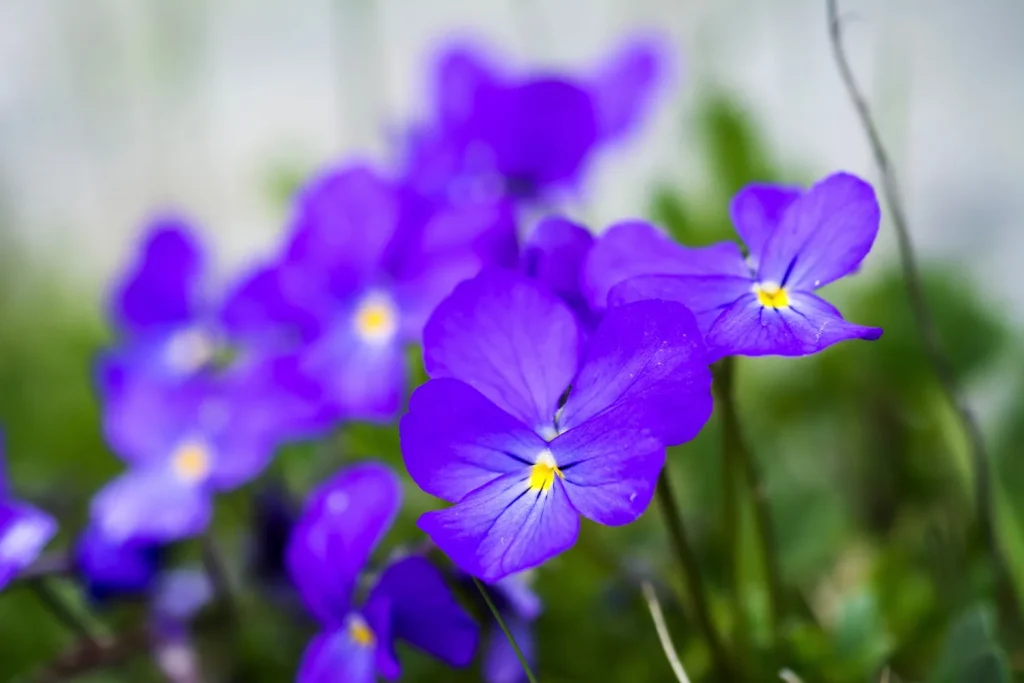
This small purple flower is characteristic of the Western Alps: it is only found in this mountainous region in the world. It is one of the first species to flower when the snow melts, and can take on different colors: purple, white, light yellow, or even variegated! It is said that in 19th century England, the pansy flower was used to secretly confess one's love to the person to whom the bouquet was given.
The crimson Orchis (and its subspecies the blood-red Orchis from 2000m altitude) :
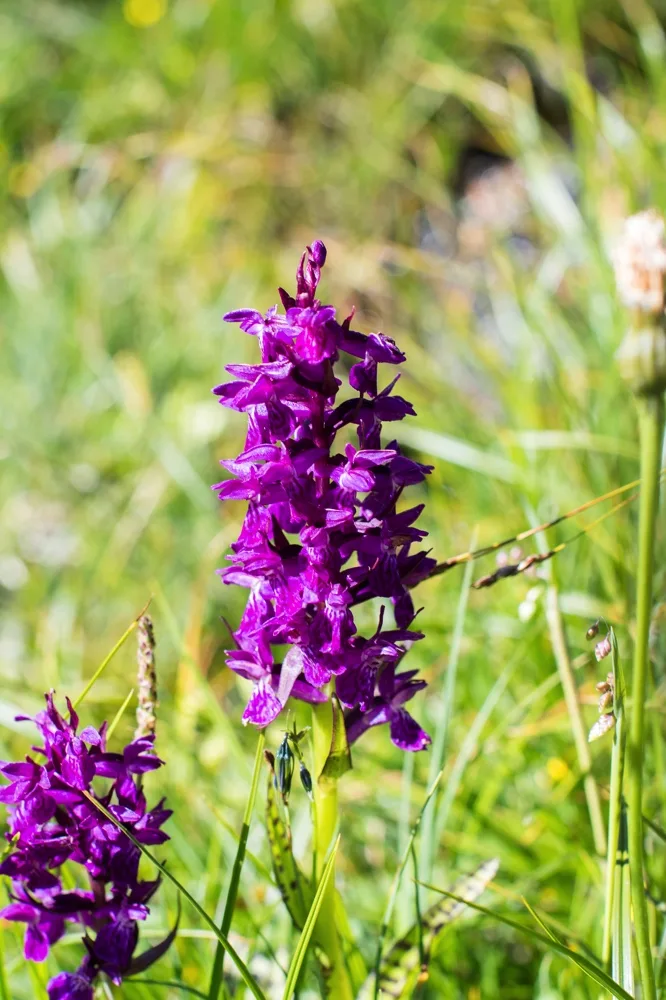
Who says you have to go to the tropics to boast of having seen real wild orchids? The Alps also have their share of wonders for you to discover, and the beautiful orchids that populate the mountain pasture plains are one of them! The crimson orchis likes humidity, so it is mostly found in humid areas, around rivers or lakes for example. From an altitude of 2000m, its cousin the blood-red Orchis takes over, and which can be recognized by the dark red spots on its leaves.
Black Nigritella (Vanilla Orchis):
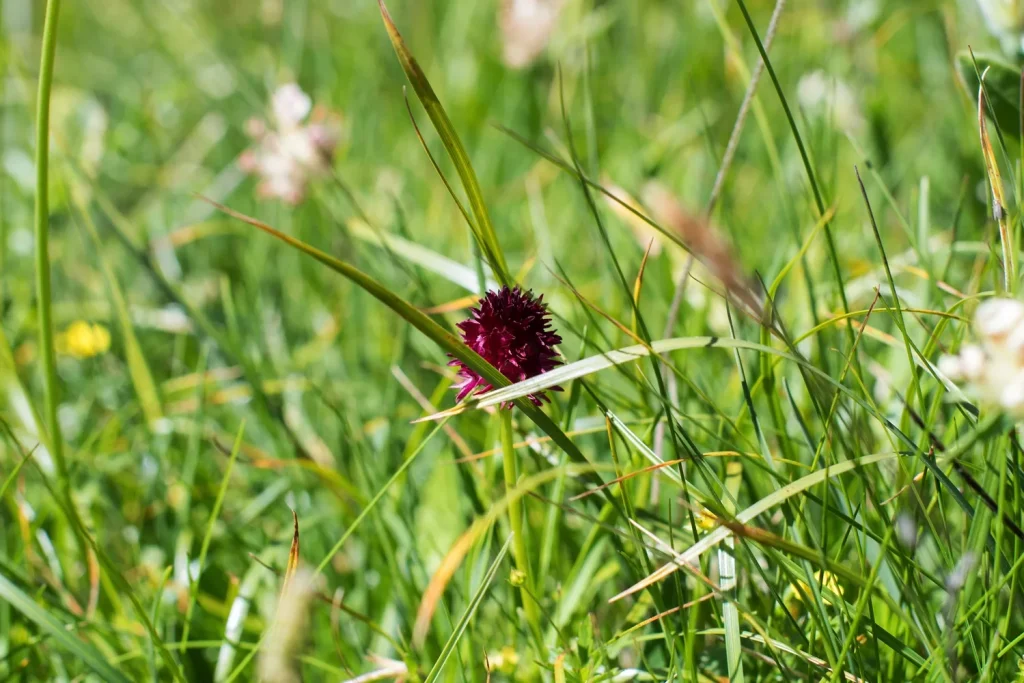
Also from the orchid family, the black nigritella owes its name to the dark color of its flower. Many species of nigritella grow and flower in French mountain pastures, but we particularly focus on the Black Nigritella, also called Vanilla Orchis. If you come across it, bend over and hold your nose: this little flower gives off a sweet scent of vanilla that is quite unusual in the mountains!
Now you know some of the secrets of the flora of the region Val Thorens. If you come across one of these beautiful specimens, resist the urge to pick it to make a pretty bouquet which will unfortunately only live a few days... The mountain ecosystem is fragile, and each plant has its role to play! So leave the flowers where they are, and instead take with you pretty photos of the plants in their natural environment!
Themes





